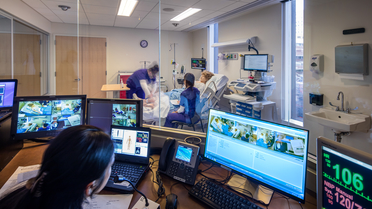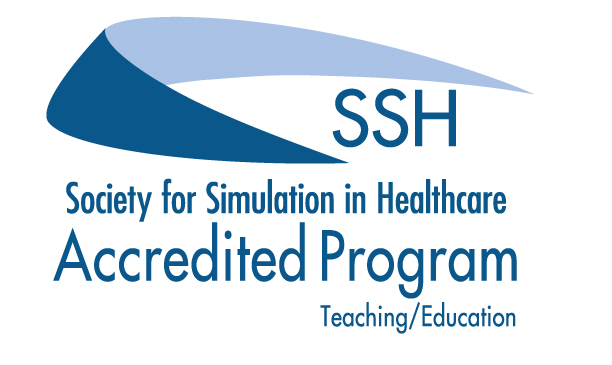
NYU Rory Meyers College of Nursing’s 10,000-square-foot Joan K. Stout, RN, FAAN Clinical Simulation Learning Center (CSLC) is designed to simulate the hospital and outpatient environment for both undergraduate and graduate students. Each week more than 100 simulation sessions are conducted at the CSLC for 1,000 BS and MS students. The CSLC allows students to enhance their clinical skills and nursing knowledge in a safe learning environment through the use of computerized manikins, standardized patients, task trainers, and other high-tech hospital equipment. Students must use their clinical judgment, knowledge, communication, and teamwork skills during each simulation.
The CSLC is equipped with the most advanced computerized manikins that have realistic features such as blinking eyes with pupils that react to light, palpable pulses, and the ability to simulate normal and abnormal heart and lung sounds. The manikins are programmed to simulate real patient scenarios reflecting commonly occurring patient health problems such as diabetes and heart failure. In addition to the manikins, the CSLC uses standardized patients (SPs) who are actors who have been trained in a standardized manner to portray a patient during simulated patient encounters.
BS Program
The clinical learning experiences for undergraduate students consist of very two important components: on- and off-campus clinicals. Almost 50% of students' clinical experiences take place at the CSLC and are referred to as on-campus clinicals. The off-campus clinical component takes place at various agencies such as acute care hospitals, long-term care settings, and community health care agencies. The on-campus clinical simulation learning session is viewed as a safe, supportive, nonjudgmental clinical learning environment that provides students with consistent clinical learning experiences related to the expected individual course and overall program outcomes. In this protective learning environment, students can make a mistake without the fear of harming a patient and subsequently learn from the mistake in order to prevent such errors from happening in the future.
MS Program
The primary care nurse practitioner (NP) programs (adult, pediatric, and family), adult acute care, mental health, and nurse-midwifery students use simulation as a learning strategy. Nursing education students use the CSLC to gain valuable teaching experience through their teaching practicum hours working with our undergraduate students.
The framework for teaching/learning and evaluation of competencies is in concert with the American Association of Colleges of Nursing’s (AACN) Baccalaureate and Master’s Essentials. Graduates are well prepared to enter the nursing workforce and demonstrate AACN’s essentials for nursing practice with a particular emphasis on those related to Quality and Safety Education for Nurses (QSEN), Interprofessional Education Collaborative (IPEC), and evidence-based practice (EBP).
